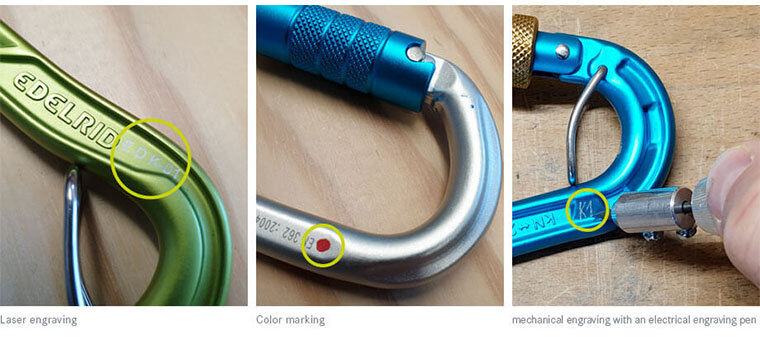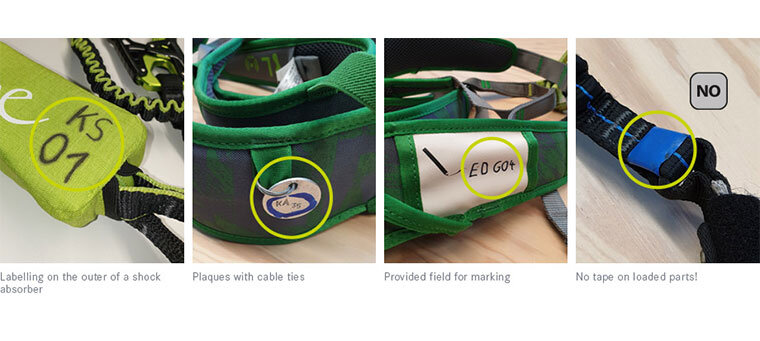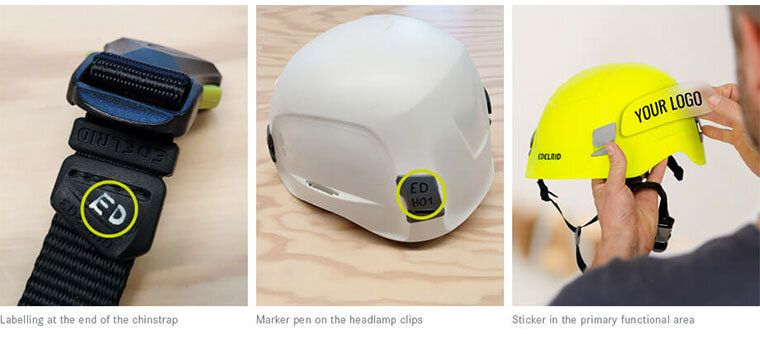Equipment can be individually marked to identify the owner on equipment items or to simplify attribution to the product data-sheet. Since the transition between marking and manipulation is smooth, some examples of professional marking are shown below.
PPE MADE OF METAL
Laser engraving, mechanical engraving with an electrical engraving pen or color marking with a touch-up pen have proven to be effective for the permanent marking of carabiners, safety devices or other PPE made of metal. The marking must not be deeper than 0.1 mm so as not to impair the strength of the component. The marking must be applied next to functional areas at a point with no or as little rope contact as possible so that it is permanent and does not increase rope wear. Ideally, the marking shall be applied close to the manufacturer's marking without concealing or impairing it.






